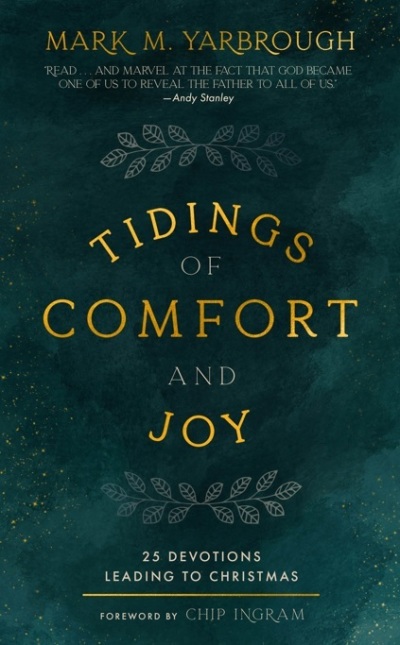Seminary head releases new 'through-the-Bible' Advent devotional to prepare hearts for Christmas

In time for Advent, Dallas Theological Seminary President Mark Yarbrough has released a new Christmas devotional that uses the whole Bible to explain the significance of the nativity story.
Titled Tidings of Comfort and Joy: 25 Advent Devotionals Leading to Christmas, the devotional book was released in October by Lexham Press.

Amid the hustle and bustle of a hectic holiday season, the 25 devotionals spread across about 176 pages aim to help readers “focus December on Jesus” and prepare their hearts for the true meaning of Christmas.
In an interview with The Christian Post, Yarbrough said he was inspired to write the devotional because he is, as he put it, “a Christmas nut.”
“I love Christmas,” Yarbrough, who took over as DTS’ sixth president in July 2020, said. “For believers, it is our holiday, when we get to revel in the greatest story ever told, where the Word became flesh. It was fun to write a Christmas book in the middle of a Texas summer.”
Yarbrough, a professor of Bible Exposition, discussed how his book differs from other Christmas devotionals and why he included Bible passages in his book that do not directly talk about the nativity story. Below are edited excerpts from the interview:

CP: How would you say this book contrasts with other Christmas-centered devotionals?
Yarbrough: There is a lot of it that is the same.
What is unique about this is that it is a “through-the-Bible” devotional. So, in other words, we start in Genesis and end up in the New Testament, even way beyond the nativity accounts that we get in Matthew and Luke. So, it’s kind of a Genesis to Revelation. We’re going to hit various passages of Scripture along the way.
A lot of devotionals will just zero in on the nativity.
Another thing that is different about it is that it is an action-oriented devotional. In other words, I have something that I call for every devotion, an advent application. So, there’s some challenges that come out of this.
Here’s something to do with the text, not to just ponder it. That’s part of it. But something to do with it for parents, for grandparents, for families, for all of us as believers.
Because I think that we learn best by doing, so we ponder the passage and look at the text, and then there’s a call to action.
CP: In keeping with the Genesis-to-Revelation format you mentioned, how important is it to draw from the Old Testament when telling the Christmas story?
Yarbrough: I think we miss it if we don’t.
The New Testament account that we get of the incarnation is best understood in the grand narrative of the Bible.
While it’s fascinating, as you know, to zero in the mystery that we see in the babe of Bethlehem when we see that Jesus is the fulfillment of all of the Old Testament covenant promises. When we see that, we have a more grand understanding that God has been on the move all along.
CP: For the Dec. 21 entry, you centered on a passage from the New Testament book of John even though that book does not overtly mention the nativity story. How come?
Yarbrough: We don’t want to lose John’s message in all of this. Even though he doesn’t, to your point, have the nativity, the huge theme that we have of the fact that Jesus is God.
The orthodoxy of the faith is that Jesus is both deity and perfect humanity. In John’s emphasis in the shock of all shocks, that God Himself became flesh and dwelt among us, is just an amazing thing that is presented in John’s Gospel.
So John is just in awe of the fact that God stepped into time in the person of Jesus Christ in order to come as the sacrificial lamb. So, it’s very “Christmasy,” if I can phrase it that way. John just goes about it in a very different way.
CP: What do you hope people take away from your devotional?
Yarbrough: I hope we marvel at the incarnation. I hope we revel in the fact that this is the greatest story ever told and that Jesus is the fulfillment of all the Old Testament covenant promises.
I also hope, though, that Christmas should make us look to Advent No. 2. So if lap No. 1 of the Messiah is the babe in Bethlehem, it should also remind us that Christians hold to the fact that Jesus is coming again and that lap No. 2 is promised.
Lap No. 1 of the Messiah has saved our souls from Hell and has provided us purpose here and now. In other words, we’re not just saved from something; we’re saved for something, and that the best is yet to come.
Lap No. 1 reminds us that lap No. 2 is on its way.












